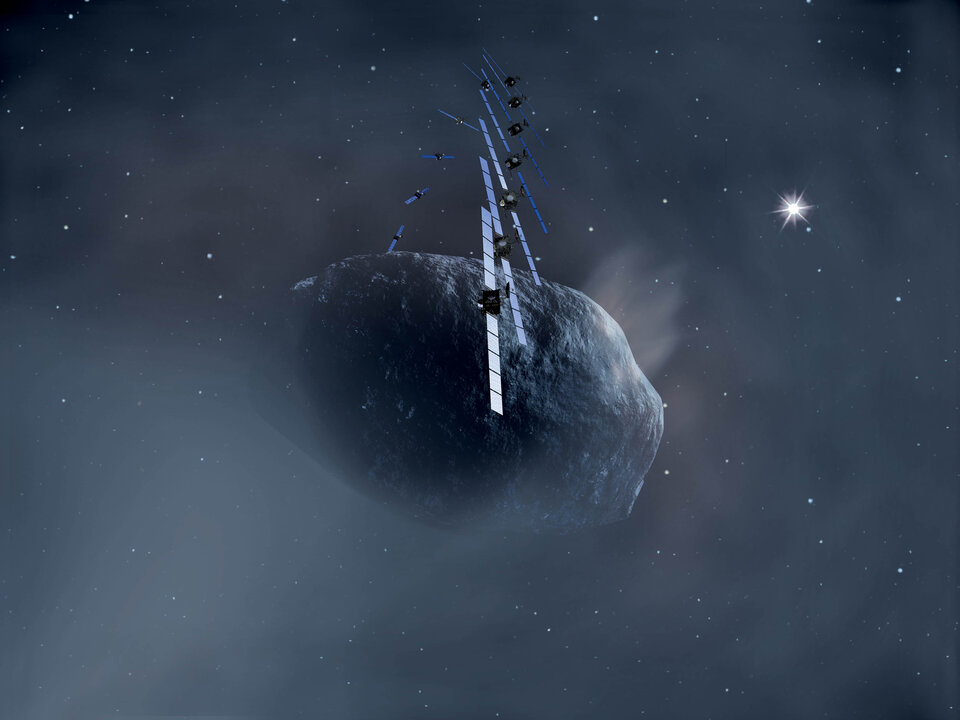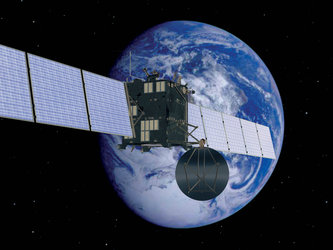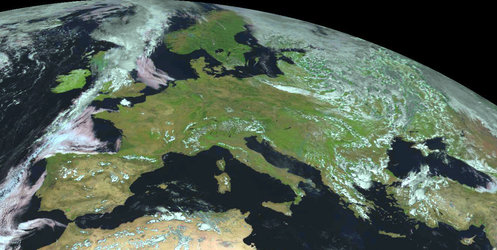ESA's DG meets the press
Early this morning, ESA Director General Jean-Jacques Dordain met with members of the press at ESA Headquarters in Paris to review the events of 2003 and to outline plans for 2004.
Dordain took the opportunity offered by the press briefing to welcome the new vision for the US space exploration programme, announced by President Bush from NASA last evening. President Bush committed the United States to completing the International Space Station by 2010, and to a long-term human and robotic programme to explore the solar system. The first step would be a return to the Moon to enable future exploration of Mars and other destinations.
“This” said ESA’s Director General, “is very good news for the space sector and thus for ESA too”. Dordain told the press that ESA’s ongoing Aurora Programme, launched two years ago, is already studying the technologies needed for robotic and human missions to the Moon and to Mars. ESA looks forward to working with NASA, and other space agencies, on a human mission to Mars.
Dordain told the press that 2003 had been marked by failures and successes in space but “there is a great deal of solidarity between space agencies”. This meant genuine sympathy when things went wrong and rejoicing at one another’s achievements.
Plans for the future

When outlining the events planned for 2004 Dordain said that ESA’s top priority was further cooperation with the European Union to implement a European space policy. “Europe is already a key actor in space but more can be and must be done to answer the needs of European citizens and of an enlarging Europe” he said.
Agenda 2007, the Director General’s vision of ESA in the coming years, calls for an increase of 30% in ESA activities by 2007. In his Agenda 2007 document Dordain says that this increase is needed because of the demand for new services resulting from the enlargement of the European Union, the need to bridge the digital divide and the new tasks assigned to the European Union, such as those for defence and security. In particular he stresses that space must become more relevant for Europe’s citizens with the use of space technology to help meet demands for greater security, a healthier environment and a better quality of life.
ESA missions planned in 2004 include the launch of Rosetta to the comet Churyumov-Gerasimenko in February, the mission of ESA astronaut Andre Kuipers to the ISS in April, the Ariane 5 ECA qualification launch in June and ESA’s first Earth Explorer mission Cryosat, planned for the autumn. In February, the Council will finalise the decisions relating to three new launch programmes that could not be taken in December: European Guaranteed Access to Space, Soyuz launches from Europe’s spaceport in Kourou and the Future Launcher Preparatory Programme.
Other important events in 2004 will be the first joint meeting of the ESA and EU Councils and the adhesion of two more countries, Greece and Luxembourg, to the ESA Convention.

The press briefing could not end without mention of Mars Express, an ESA success story spanning both 2003 and 2004. Launched in June last year, Mars Express has now been placed into its final orbit around Mars and everything so far is going according to plan. Dordain announced that the first high-resolution images will be released next week.
“2004 will be rich in both strategic and technical activities, I am confident that ESA will be a success story this year too”.







